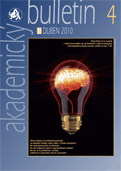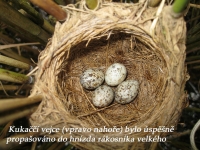Each female cuckoo lays eggs of a single type, which more or less resembles the eggs of the host species on which the given female specialises, but had not yet been known whether the cuckoo female selects also a specific nest within the host population. This question waited for its solution several centuries. Now, a group of scientists in Brno from the Institute of Vertebrate Biology of the ASCR, v. v. i., has brought a possible explanation, which they have published in the prestigious scientific journal Proceedings of the Royal Society B.
Because birds, unlike humans, perceive also the ultraviolet part of the light spectrum, it was first necessary to measure the reflection waves of tens of eggs of cuckoos and clutches of Eurasian Reed Warblers, which are their common hosts in South Moravia, with a portable spectrophotometer. The data acquired in this way then converted by the authors using a mathematical model, so they could look at the whole problem from the perspective of the bird’s eye. In the end, they came to a series of statistical analyses, whose conclusion was very surprising. The eggs of the cuckoos in the naturally parasitized nests were more similar to the host eggs (in terms of colour) than the clutches randomly selected by a simulation. The authors drew the same conclusions when they compared the mimicry of the cuckoo eggs in naturally parasitized nests with the closest non-parasitized nests.
These results convincingly prove that the cuckoo is able to select the host nests actively, which lowers the likelihood of the recognition of its eggs by the host. It proves that the cuckoo can through its behaviour create selection pressure on the host without having to improve the mimicry of its eggs.
Photo: Cuckoo eggs (upper right) were successfully put in the nest of a Eurasian Reed Warbler.
Prepared by: Institute if Vertebrate Biology of the ASCR
25 Nov 2011








